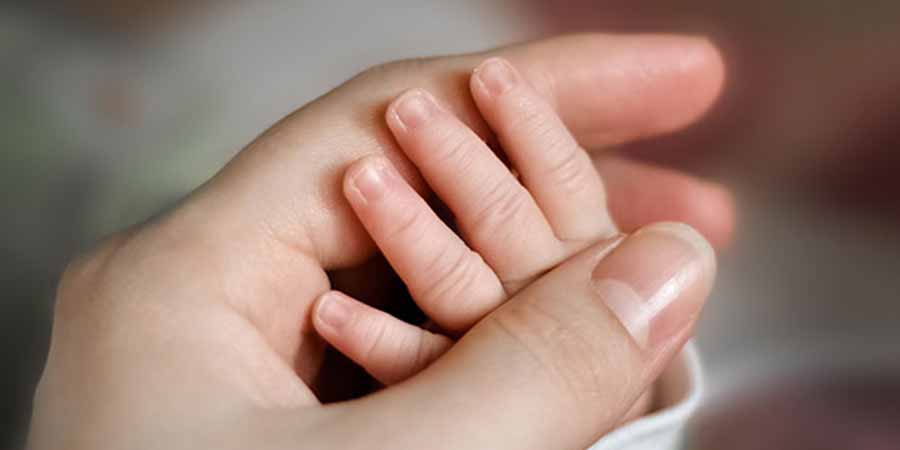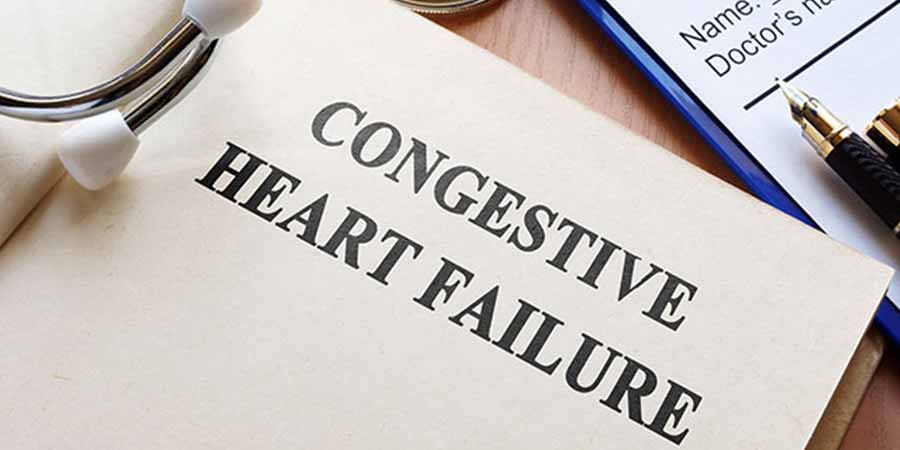The postpartum recovery period covers the time period from birth until approximately six to eight weeks after delivery. This is a time of healing and rejuvenation as the mother’s body returns to prepregnancy states. Nurses and other healthcare professionals need to be aware of the normal physiologic and psychological changes that take place in women’s bodies and minds after delivery in order to provide comprehensive care during this period. In addition to patient and family teaching, one of the most significant responsibilities of the postpartum nurse is to recognize potential medical complications after delivery.
Detailed information on obstetric and labor and delivery problems can be found in the Nursing CEU course Pregnancy Complications.
Postpartum Physiologic Changes

Immediately after delivering, women experience massive shifting as the body returns to its pre-pregnant state. Some of the physiologic adaptations to the reproductive system are described below:
The uterus begins a process known as involution immediately after the delivery of the placenta. The uterus, with the assistance of the uterine muscles, contracts the uterine vessels and impedes blood flow. Large vessels at the site of placental attachment thrombose to control bleeding.
Exfoliation also occurs at this time. Exfoliation is the sloughing off of dead tissue at the site where the placenta is attached to the uterine wall.
The uterus continues to contract after delivery, and its size decreases rapidly as estrogen and progesterone levels diminish. Immediately after delivery, the upper portion of the uterus, known as the fundus, is midline and palpable halfway between the symphysis pubis and the umbilicus. By approximately one hour post delivery, the fundus is firm and at the level of the umbilicus. The fundus continues to descend into the pelvis at the rate of approximately one centimeter (finger-breadth) per day and should be nonpalpable by two weeks postpartum.
Afterpains, or intermittent uterine contractions, are a normal occurrence during the postpartum period.
After delivery, the endometrial surface of the uterus is shed via the vagina. The shedding endometrium is known as lochia.
As with all other reproductive organs and structures, the cervix also changes as the body returns to a prepregnancy state. The internal os closes almost completely within three to four months of delivery.
The vaginal walls are smooth after delivery, and the vaginal folds, known as rugae, do not return until approximately 3 weeks postpartum.
Vaginal dryness and painful intercourse, known as dyspareunia, may be noted during the postpartum period due to decreased estrogen levels.
After delivery there is a significant decrease in estrogen and progesterone levels. Prolactin initiates milk production, and the breasts become engorged, as well as warm and tender, between postpartum days 3 and 4. Mothers often refer to this as having their milk “come in.”
Menstruation does not typically return until 12 weeks or later. However ovulation can return prior to menses, and it is important for healthcare providers to discuss family planning with patients during the early postpartum period in order to prevent undesired pregnancies.
The postpartum body removes excess fluid accumulated during pregnancy by diuresis. In addition, women frequently experience excessive perspiration (diaphoresis), which also releases accumulated fluid during the postpartum period. After delivery, the diaphragm descends and postpartum women’s respirations normally return to the prepregnant state. After delivery, relaxin levels subside and the pelvic ligaments and joints return to their prepregnant state. However, the joints of the feet remain altered, and many women notice a permanent increase in shoe size. The abdominal wall is weakened and the muscle tone of the abdomen is diminished after pregnancy. Patients should be instructed to begin abdominal exercises anytime following a vaginal delivery and after abdominal tenderness resolves following a cesarean section, generally in four weeks.
Postpartum Psychological Changes

Bonding, sometimes referred to as attachment, between mothers and infants is affected by a multitude of factors, including socioeconomic status, family history, role models, support systems, disturbed sleep, cultural factors, and birth experiences.
Nurses can assess for attachment behaviors by observing the interactions between mothers and their infants. Behaviors exhibited by mothers that indicate positive attachment include:
- Touching
- Holding
- Kissing
- Cuddling
- Talking and singing
- Choosing the “en face” position (face-to-face, approximately 8 inches apart)
- Expressing pride in the infant
Postpartum assessment of attachment should begin immediately after delivery and continue throughout the infant’s first year of life. Most women positively attach to their newborn infants. However, there are some who do not form attachments appropriately. Malattachment behaviors vary and can include:
- Refusing to look at the infant
- Refusing to touch or hold the infant
- Refusing to name the infant
- Negative comments about the infant
- Refusing to respond or responding negatively to infant cues (e.g., crying, smiling)
If malattachment is noted, providers should immediately report the observation and continue to monitor both the mother and infant.
Postpartum depression is a serious and debilitating depression that affects many women throughout the world. Postpartum depression occurs in 8% to 15% of women after delivery. Various screening tools are available.
Symptoms are generally noted within the first three months but may occur up to a year after delivery. Symptoms typically include changes in sleep, energy, appetite, weight, and libido. Other symptoms include lack of energy to the point of not getting out of bed for hours; but this should be distinguished from the normal lack of energy that results from sleep deprivation of caring for an infant. Additional symptoms include anxiety and panic attacks; irritability and anger; feeling inadequate, overwhelmed, or unable to care for the baby; and feelings of shame, guilt, and having failed as a mother.
Postpartum depression is usually treated with counseling and medication.
More information available from March of Dimes.
Routine Postpartum Assessment and Patient Education

Primary responsibilities of nurses in postpartum settings are to assess postpartum patients, provide care and teaching, and if necessary, report any significant findings. It is imperative for nurses to distinguish between normal and abnormal findings and to have a clear understanding of the nursing care necessary to promote patients’ health and well-being.
Many nurses find it useful to use the acronym BUBBLE-LE to remember the necessary components of the postpartum assessment and teaching topics. These include:
BUBBLE-LE
| B | Breasts |
| U | Uterus |
| B | Bowel function |
| B | Bladder |
| L | Lochia |
| E | Episiotomy/perineum |
| L | Lower extremities |
| E | Emotions |
BREASTS
The breasts are assessed for:
- Signs of engorgement, including fullness, around postpartum days 3 and 4
- Hot, red, painful, and edematous areas, which could indicate mastitis
- Nipple condition and latch-on technique of mothers who are breastfeeding
UTERUS
The fundus is assessed for:
- By approximately one hour post delivery, the fundus is firm and at the level of the umbilicus.
- The fundus continues to descend into the pelvis at the rate of approximately 1 cm or finger-breadth per day and should be nonpalpable by 14 days postpartum.
In addition, patients are assessed for uterine cramping and treated for pain as needed.
Patients or a family member can be taught to assess the firmness of the fundus and to provide massage in the event of a boggy uterus or excessive bleeding. Patients are encouraged to void before palpation of the uterine fundus because a full bladder displaces the uterus and can lead to excessive bleeding.
BOWEL
Assessment of the bowel is important in all postpartum patients. It is especially vital for patients following C-sections. The bowel is assessed for:
- Bowel sounds
- Return of bowel function
- Flatus
- Color and consistency of stool
Prescribed stool softeners or laxatives are administered as needed to treat constipation and ease perineal discomfort during defecation.
BLADDER
Assessment of urination and bladder function includes:
- Return of urination, which should occur within six to eight hours of delivery
- For approximately 8 hours after delivery, amount of urine at each void. Patients should void a minimum of 150 mL per void; less than 150 mL per void could indicate urinary retention due to decreased bladder tone post delivery (in the absence of preeclampsia or other significant health problems).
- Signs and symptoms of a urinary tract infection (UTI), including frequent urination, bladder spasm, cloudy urine, persistent urge to urinate, and pain with urination
The bladder should be nonpalpable above the symphysis pubis.
Patients are encouraged to drink adequate fluid each day and to report signs and symptoms of a urinary tract infection, including frequency, urgency, painful urination, and hematuria.
LOCHIA
Lochia is assessed during the postpartum period:
- Saturating one pad in less than an hour, a constant trickle of lochia, or the presence of large (i.e., golf-ball sized) blood clots is indicative of more serious complications and should be investigated immediately. A significant amount of lochia despite a firm fundus may indicate a laceration in the birth canal, which should be addressed immediately.
- Foul-smelling lochia typically indicates an infection and needs to be addressed as soon as possible.
- Lochia should progress from rubra to serosa to alba. Any changes in this progression could be considered abnormal and should be reported. Lochia rubra is present on days 1–3, lochia serosa on days 4–10, and lochia alba on days 11–21.
It is important to note that patients who had a C-section will typically have less lochia than patients who delivered vaginally; however, some lochia should be present.
After discharge, patients should report any abnormal progressions of lochia, excessive bleeding, foul-smelling lochia, or large blood clots to their physician immediately. Patients are instructed to avoid sexual activity until lochial flow has ceased.
EPISIOTOMY/PERINEUM
The acronym REEDA is often used to assess an episiotomy or laceration of the perineum. REEDA stands for:
REEDA
| R | Redness |
| E | Edema |
| E | Ecchymosis |
| D | Discharge |
| A | Approximation |
Redness is considered normal with episiotomies and lacerations; however, if there is significant pain present, further assessment is necessary. The use of ice packs during the immediate postpartum period is generally indicated.
There should be an absence of discharge from the episiotomy or laceration, and the wound edges should be well approximated. Perineal pain must be assessed and treated.
Performing Kegel exercises are an important component of strengthening the perineal muscles after delivery and may be begun as soon as it is comfortable to do so.
LOWER EXTREMITIES
To assess for deep vein thrombosis (DVT), the lower extremities are examined for the presence of hot, red, painful, and/or edematous areas. An elevated temperature may also be present. The legs for assessed for adequate circulation by checking the pedal pulses and noting temperature and color. In addition, the lower extremities are assessed for edema.
EMOTIONS
Emotions are an essential element of the postpartum assessment. Postpartum women typically exhibit symptoms of the “baby blues” or “postpartum blues,” demonstrated by tearfulness, irritability, and sometimes insomnia. The postpartum blues are caused by a multitude of factors, including hormonal fluctuations, physical exhaustion, and maternal role adjustment. This is a normal part of the postpartum experience. If symptoms last longer than a few weeks or if the postpartum patient becomes nonfunctional or expresses a desire to harm herself or her infant, she should be instructed to report this to her certified nurse-midwife or physician immediately.
Nurses and other healthcare professionals need to be aware of the normal physiologic and psychological changes that take place in women’s bodies and minds after delivery in order to provide comprehensive care during this period.
Postpartum Complications
CESAREAN SECTION ISSUES
Mother care after a C-section has some additional assessment needs during the postpartum period, including incision status, pain, respirations, and lung and bowel sounds.
C-section patients may have vertical or horizontal incisions that will need to be assessed throughout the postpartum period. The REEDA method (redness, edema, ecchymosis, discharge, and approximation) can be used to assess these incisions.
It is important to teach patients to examine their incision each day with a mirror or have a family member monitor the incision for them. Patients are instructed to immediately report any abnormal findings, such as hematomas, abnormal drainage, odors, or significant pain, to their healthcare provider.
POSTPARTUM HEMORRHAGE (PPH)
Postpartum hemorrhage is one of the leading causes of death among postpartum women. PPH refers to a blood loss of at least 500 mL after a vaginal birth and at least 1000 mL after a C-section. Postpartum hemorrhage is categorized as early or late. Early refers to a hemorrhage occurring within the first 24 hours after birth, while late refers to a hemorrhage occurring 24 hours to 12 weeks after delivery.
Early postpartum hemorrhage is often caused by uterine atony, or a failure of the uterine muscles to contract properly, thereby inhibiting the healing of blood vessels at the site of placental attachment. The blood vessels continue to bleed until the uterine muscles contract. Signs of uterine atony include a boggy uterus, a fundus that is higher than expected upon palpation, and excessive lochia.
The nurse must report a PPH immediately and prepare for the insertion of a large-bore intravenous catheter, if one is not already present, and the administration of intravenous fluids and oxygen.
In the case of an early PPH caused by damage to the birth canal, surgical repair is usually necessary. Late postpartum hemorrhage is often caused by diffuse uterine atony or subinvolution of the uterus (uterus not returning to its normal size) caused by retained placental fragments and/or infection that prevent the uterus from contracting.
HYPOVOLEMIC SHOCK
A sequelae of PPH is hypovolemic shock. In the presence of a PPH, hypovolemic shock can occur and cause severe organ damage and even death if untreated. These patients will also require oxygen (usually 8–10 L via face mask), IV fluids, and possibly blood products. This is a very serious situation, and nurses must be prepared to assist in this life-threatening emergency.
THROMBOPHLEBITIS
Women can suffer from thrombophlebitis as a result of venous stasis and the normal hypercoagulability state of the postpartum period. Thrombophlebitis is an inflammation of the blood vessel wall in which a blood clot forms and causes problems in the superficial or deep veins of the lower extremities or pelvis. All postpartum women are at risk. However, certain risk factors predispose some women to developing thrombophlebitis. These risk factors include:
- Cesarean delivery
- Preeclampsia
- Hemorrhage
- Infection
The blood clot that develops in thrombophlebitis can lead to a life-threatening pulmonary embolism as a result of the clot detaching from the vein wall and blocking the pulmonary artery. The major signs of pulmonary embolism include dyspnea and chest pain.
POSTPARTUM INFECTIONS
Postpartum infections are infections accompanied by a temperature of 38 °C or higher on two separate occasions during the first 10 days postpartum, exclusive of the first 24 hours. Postpartum patients are carefully monitored for signs and symptoms of infection during this period. Common infections that may occur during the postpartum period include:
- Mastitis: A localized painful infection of the breast, which can progress to an abscess if not treated properly. Treatment for mastitis typically involves antibiotic therapy and regular breastfeeding or pumping the breast.
- Endometritis: An infection of the uterus characterized by postpartum fever, midline lower abdominal pain, and uterine tenderness. Endometritis is usually treated with broad-spectrum intravenous antibiotics and rest.
- Wound infections: Commonly affected wound sites during the postpartum period include the perineum, where lacerations and episiotomies occur, and C-section incisions. Patients are taught about proper handwashing and encouraged to maintain adequate fluid intake.
- Urinary tract infections: Common during the postpartum period, urinary tract infections are treated with antibiotics, but it is important that these patients drink adequate fluids to flush bacteria out of the system.
HEMORRHOIDS AND INCONTINENCE AFTER CHILDBIRTH
Hemorrhoids are common in late pregnancy (7.8%). Symptomatic hemorrhoids may be treated with local anesthetics, topical astringents/protectants, bulk-forming laxatives, stool softeners, topical corticosteroids, or topical vasoactive agents.
The postpartum period is a time of joy and satisfaction for most women and their families. In order to ensure that these mothers are off to a healthy and happy start with their newborns, nurses must be prepared to assess, intervene, and teach during this time. Most hospitals and birthing centers provide guidelines for nurses providing postpartum care. Nurses should remain up to date on postpartum care and are encouraged to follow their healthcare facility’s recommendations when providing patient care.
Sign up for our newsletter email list and like us on Facebook and Instagram to be among the first to know about all our special discounts and offers!
About Wild Iris Medical Education:
Wild Iris Medical Education, Inc., is a privately held, woman-owned company providing online healthcare continuing education. In 1998, we began offering online ANCC-accredited nursing continuing education courses and since then have expanded to provide CEUs for occupational therapists, physical therapists, paramedics, EMTs, and other healthcare professionals.
Accredited and Approved Nationwide.
High-quality CEU Courses since 1998.

Join Our More Than 750,000 Satisfied Customers Now!
High-quality, accredited, evidenced-based continuing education courses in an easy-to-use format designed for learning, from Wild Iris Medical Education. We’ve been providing online CE since 1998.



